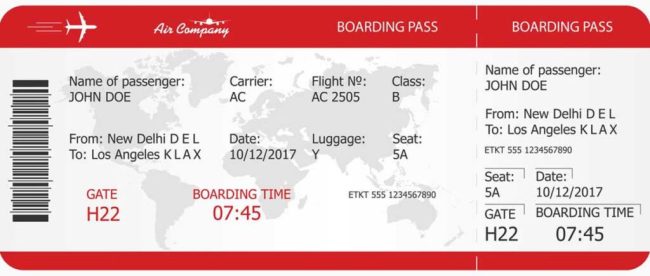The People Who Buy Airplane Tickets But Don’t Want to Fly

Air travel can be expensive and, when things go wrong, it can get incredibly frustrating. If you have to change your ticket reservation, you often get stuck in a carousel of phone calls or online chats with customer service. If the price of the new ticket is higher than your current one, you’ll have to pay the difference and, often, a change fee. If the price is lower, you usually don’t get the benefit of the price difference — and you still have to cover that change fee. Some travelers, especially those with more open-ended itineraries and unclear return dates, avoid this by simply buying a one-way ticket and then booking their return trip at a late date. It’s a good way to save some money if you’re not sure when you’re going home.
But there’s a problem with that plan if you’re traveling internationally. In most cases, the country you’re visiting will require you to obtain a visa before entering. Unless you’re planning on immigrating to the new country — which requires a more complicated visa process — they’ll only give you a visa if you’re planning to leave within a certain time period. And no, the customs agent at the nation you’re visiting isn’t going to take your word for it, so you need to provide proof that you’re trip out of their country is planned and, ideally, paid for. Typically, that means you’ll need to give them a copy of your return airline ticket — something you won’t have if you’re planning on booking that trip closer to your date of departure.
Enter “dummy tickets.”
A dummy ticket is a kind of real, but kind of fake plane ticket, and they often cost only about $25. As OnWardTicket, a website that sells dummy tickets explains, they are “a reservation for a flight that hasn’t been paid for. The purpose of a dummy ticket is to demonstrate proof of onward travel – a requirement of most countries’ immigration rules. The dummy ticket possesses all the pertinent information of a genuine ticket: traveler’s name, flight number, destination and scheduled departure and arrival times.” If the embassy official goes to check with the airline, you’ll still be okay. That’s because, as DummyTicket (another vendor of, you guessed it, dummy tickets) explains on their website, the tickets “are visible on the airline reservation systems [because] there is an actual reservation made with the airline.” But if you try to use that to board your flight, you’ll find that it won’t work, because, again, you never paid for the flight.
That seems sketchy but there are definitely legitimate use cases for dummy tickets. The most common is for travel into Europe’s Schengen Area. The 29 nations that are a part of the Schengen Borders Agreement allow you to travel between them without any sort of border check, and according to the U.S. Department of State, “tourists, exchange students, and people visiting for business from certain countries, like the United States, can travel in the Schengen area for up to 90 days.” But you’ll need a visa to get entry into the Schengen Area, and to get that visa, you’ll need to demonstrate that you’re going to leave before your 90-day period is up. If you’re backpacking through Europe or otherwise have an unclear itinerary, booking a return flight is an expensive headache; a dummy ticket would solve that problem. And there are reports across internet message boards of travelers successfully using dummy tickets for this purpose with no fraudulent intent behind it; many travelers even tell the embassy official that their return ticket is an unpaid-for reservation.
That said, one can easily see how a dummy ticket can be abused. The most obvious would be for illegal immigration — a traveler could buy a one-way ticket to a new country, use the dummy ticket to get a tourist visa, and simply never leave. But there are more creative ways to abuse the system than that — for example, you could fake a family emergency that requires international travel and use that time to get some time off from work. If your employer is skeptical, just give them a copy of your plane ticket after the fact! One of the dummy ticket sites even sells back-dated fake tickets for that specific purpose. The cost? About $35.
Bonus fact: Today, if you want a non-immigrant visa to travel into the United States, you’ll need to submit a color photo with your application, per the Department of State. But that wasn’t always the case, as Polish portrait artist Rafał Bujnowski demonstrated in 2004. That year, he was planning to visit a studio in New York, so he drew a portrait of himself, took a photo of the portrait, and sent that in with his application. As Culture.pl explains, “photographic reproduction mutes the visible brushstrokes of the painting and renders the image — while not indistinguishable from a ‘real’ picture — one that could (and did) pass initial inspection.” His visa featured a picture of the portrait — you can see both at that link.
From the Archives: Rock the GazBar: The problem with fueling up across borders.
